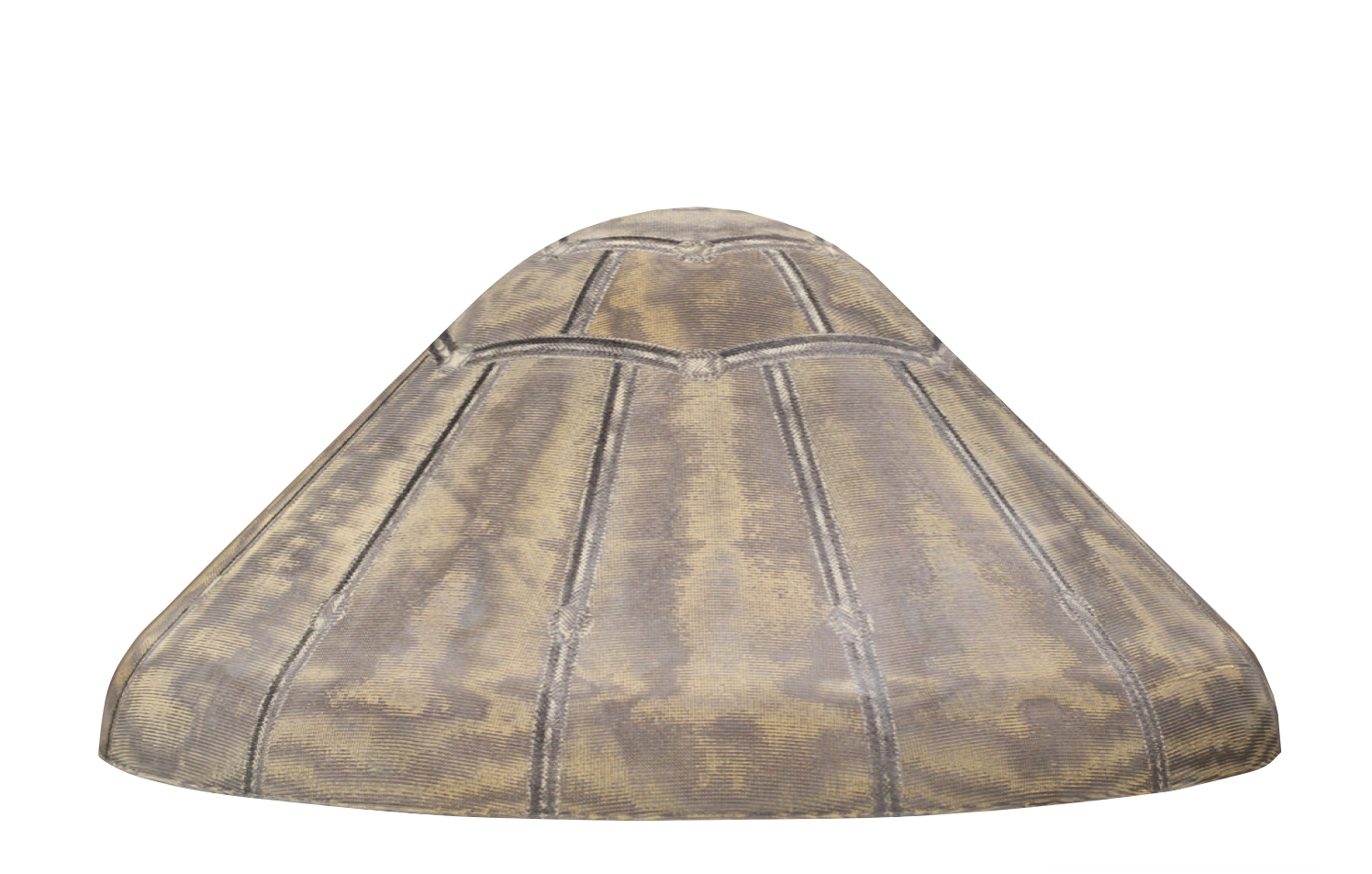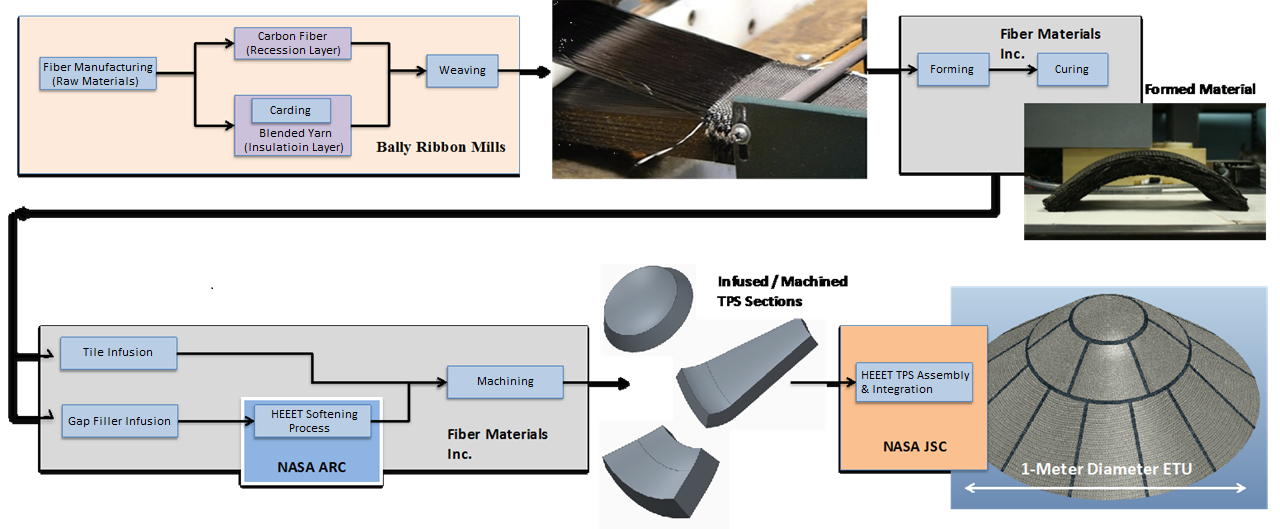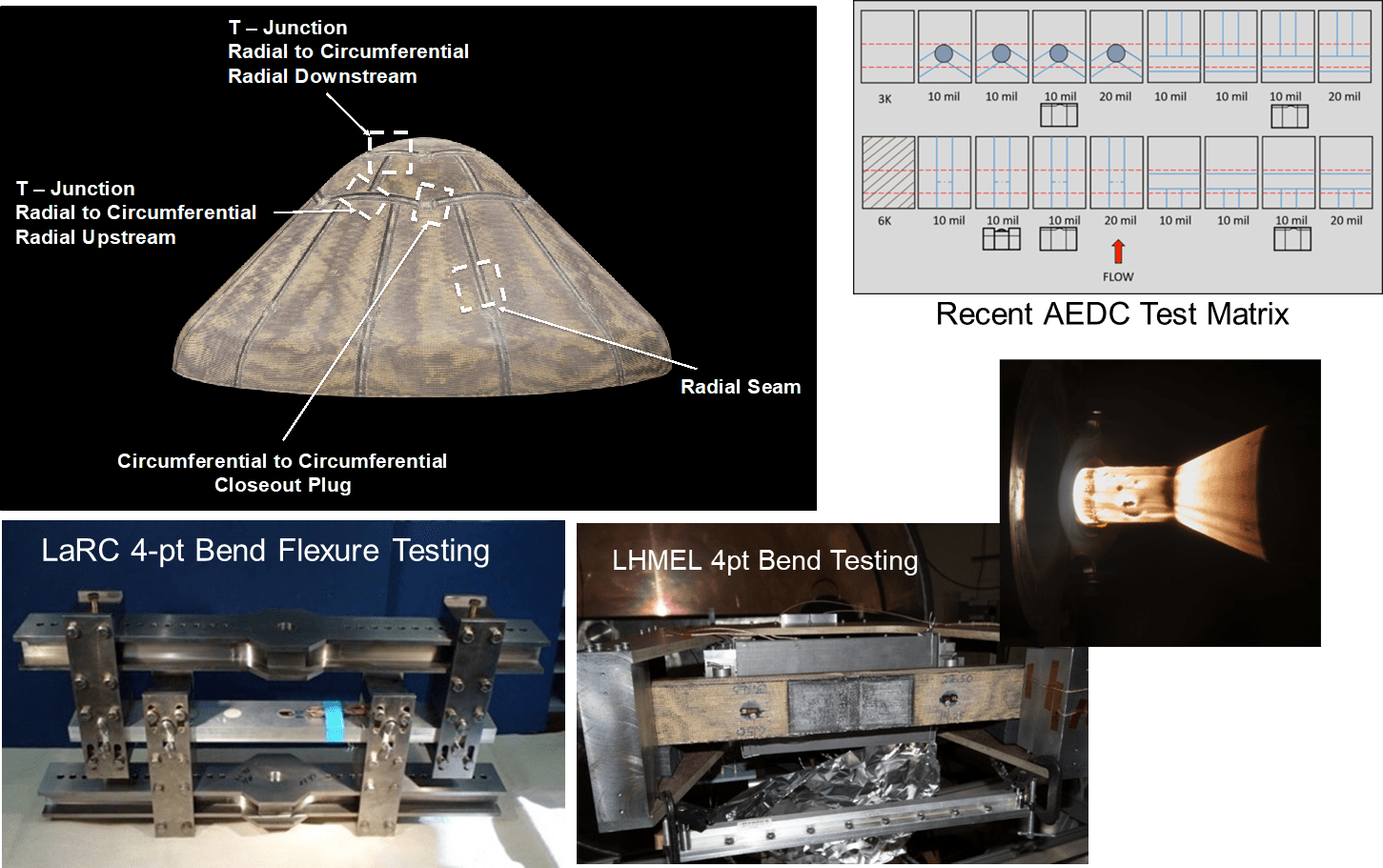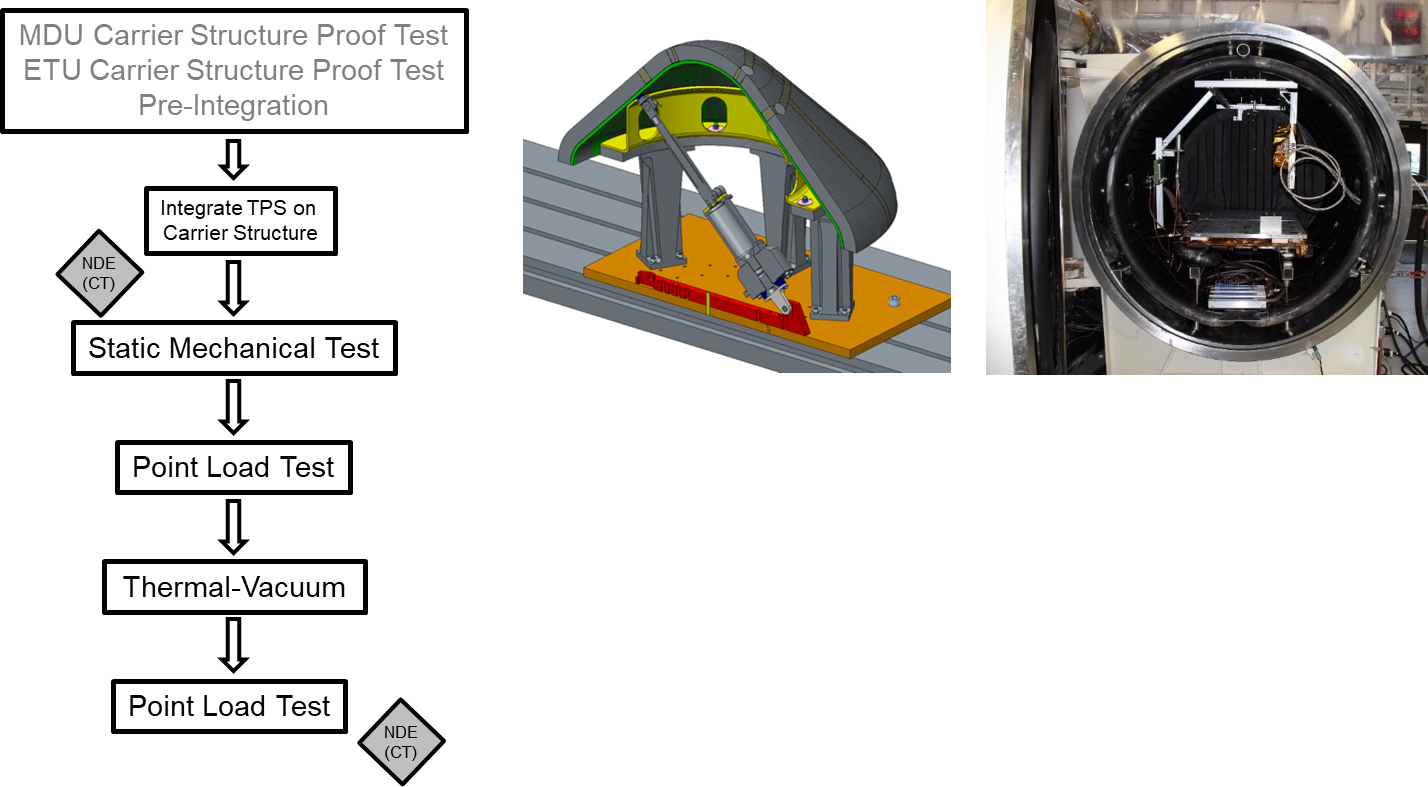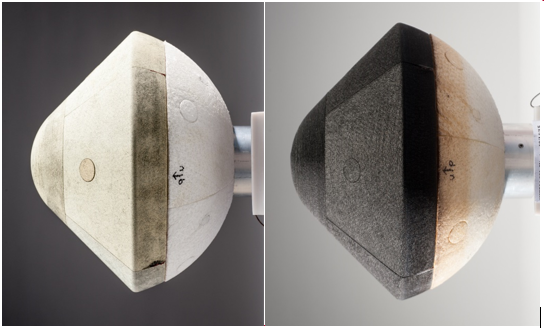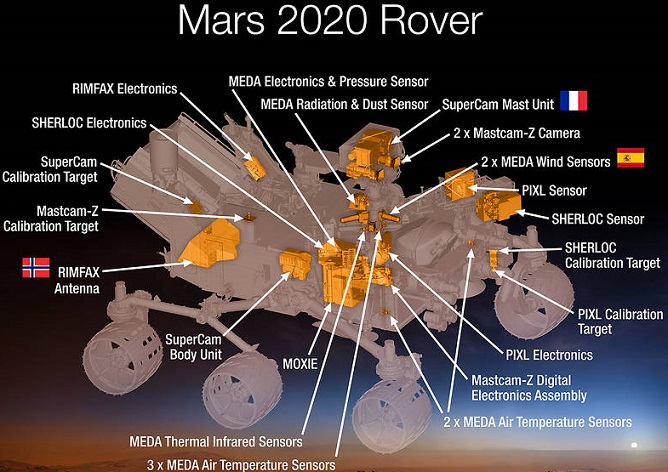The Entry Systems and Vehicle Development Branch is extremely active in the system design, development and integration of thermal protection materials. Working closely with the Thermal Protection Materials Branch, personnel have managed the development of several advanced composite materials, such as Woven TPS and Conformal TPS, with improved properties. Branch experts provide mission support in TPS evaluation and sizing, acting as TPS Cognizant Engineers for the Mars Science Laboratory and Mars 2020 missions, and providing all TPS oversight for the InSIGHT and OSIRIS-REx entry vehicles.
Heatshield for Extreme Entry Environment Technology (HEEET)
Venus probes and landers, Saturn and Uranus probes, and high-speed sample return missions from Comets and Asteroids are missions recommended by the NRC’s Planetary Science Decadal that NASA seeks to pursue in the near future. To enable these future in situ robotic science missions, the Heatshield for Extreme Entry Environment Technology (HEEET) project seeks to mature a game changing 3-D Woven Thermal Protection System (TPS) technology. The HEEET material is a dual layer TPS architecture that utilizes a layer-to-layer weave, which mechanically interlocks the different layers together in the thru-the-thickness direction.
HEEET TPS is a science enabler that will allow for a high return on investment made by both NASA’s Space Technology Mission Directorate and Science Mission Directorate. The HEEET Project has maintained substantial engagement with the TPS community to enable broad mission applicability and long-term sustainability. NASA has offered HEEET as a new technology and has incentivized its use in New Frontiers-4 announcement of opportunity. The goal of the project is to mature woven TPS heat shield architectures to TRL 6 by 2019 for future New Frontiers missions.
In support of NASA’s goal, the Entry Systems and Vehicle Development Branch personnel are involved with many aspects of HEEET development, integration, and qualification testing. In order to help define the testing and analysis required to demonstrate that the HEEET system has achieved TRL6, personnel associated with the Branch led several industry days and related activities associated with HEEET project requirements and their derivation from likely mission requirements. TPS sizing studies for NF-4 proposal efforts along with HEEET specific margins policy which has unique aspects associated with the dual layer nature of HEEET were performed by Branch staff associated with the HEEET project.
As part of HEEET’s TRL advancement, the project built and tested a 1-meter diameter Manufacturing Demonstration Unit (MDU)/Engineering Test Unit (ETU). The MDU/ETU interfaces and testing conditions were developed with support from Branch staff and trace back to entry structural loads (pressure and deceleration loads), thermal environments (hot soak and cold soak), shock loads and launch load requirements for a range of missions and environments to the extent possible within ground facilities.
HEEET materials and models with representative geometries were tested in extreme thermal and structural environments to validate the viability of the MDU/ETU design features. The testing on the 1-m MDU/ETU was performed at NASA Langley Research Center.
All HEEET MDU/EDU testing is complete and all results supported the current system design and approach.
The HEEET Project is managed by the Game Changing Development (GCD) Program, which invests in revolutionary technologies to enable innovative space endeavors in the future. GCD is part of NASA’s Space Technology Mission Directorate.
For more information about GCD, please visit http://gameon.nasa.gov.
Conformal Ablative Thermal Protection Systems (CA-TPS)
The Conformal Ablative TPS project, managed by the Entry Systems and Vehicle Development Branch, was initiated as a result of a Roadmaps and Priorities report authored by the National Research Council (NRC) for Space Technology. The Conformal Ablative TPS (CA-TPS) project element leveraged the past investments made by the Aeronautics Research Mission Directorate (ARMD) and the Exploration Technology Development and Demonstration (ETDD) projects. The CA-TPS Project began, with the objective of supporting NASA Exploration Class Missions by reducing their cost and by providing enabling technologies. Primary goals of the project were to develop and demonstrate (via ground testing) a high strain-to-failure conformal ablator that can successfully perform in moderate heat flux (<1000 W/cm2) entry environments, and to advance this technology to TRL-5+.
Conformal Ablative TPS over a rigid aeroshell has the potential to solve a number of challenges faced by traditional rigid TPS materials such as the tiled Phenolic Impregnated Carbon Ablator (PICA) system on Mars Science Laboratory (MSL), and honeycomb based Avcoat on the Orion Multi-Purpose Crew Vehicle (MPCV). The compliant (high strain to failure) nature of the conformal ablative materials allows easier integration of the TPS with the underlying aeroshell structure and enables monolithic-like configurations and/or larger segments to be used. By reducing the overall part count, the cost of installation (based on cost comparisons between blanket and tile materials on shuttle) can be significantly reduced. The conformal ablator design includes a simplified design of seams between gore panels, eliminating the need for complex gap filler designs, and accommodates a wider range of allowable carrier structure imperfections when compared to a rigid material such as PICA.
The technology firsts included:
- Development of two viable conformal ablative materials, one for heat shields with capabilities exceeding 700 W/cm2 (C-PICA) to TRL 5+ and one RF-transparent backshell material with capabilities above 100 W/cm2 (C-SIRCA) to TRL 4+
- Development of a heat shield material comparable to PICA, with higher strain-to-failure and much lower thermal conductivity which will allow for a thinner TPS directly bonded to most any structure
- Development and processing of 4” thick rayon felt
- Carbonization of thick felt, resulting in ~3” thick carbon felt
- Demonstration of processing large (~0.7m2) curved conformal ablator (C-PICA) with both standard (~1”) and thick (~2.75”) carbon felts
- Manufacture of two flight articles, with matching ground test articles to test-as-you-fly and determine traceability of ground test to flight test
A Non-Reimbursable Space Act Agreement was signed with Terminal Velocity Aerospace (TVA) to design, process, machine and install two conformal ablative materials with instrumentation to two small flight vehicles and corresponding ground test vehicles. One flight vehicle was delivered to TVA, with the other retained by NASA for flight testing. The ground test articles were successfully tested in the IHF arc jet facility at Ames at conditions expected during flight.
Mars 2020
As TPS Cognizant Engineers for the Mars Science Laboratory (MSL) and Mars 2020 entry vehicles, the Entry Systems and Vehicle Development Branch personnel oversaw all aspects of the TPS materials selections, sizing, processing, testing and installation for all areas of the entry vehicles.
Click here to visit the Mars 2020 web page.





























